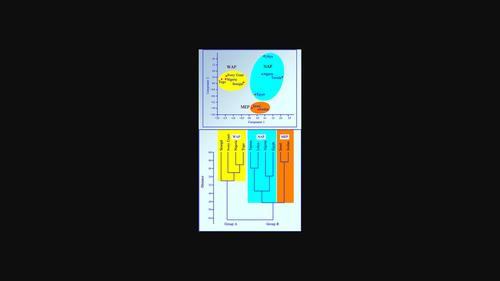当前位置:
X-MOL 学术
›
Geolog. J.
›
论文详情
Our official English website, www.x-mol.net, welcomes your feedback! (Note: you will need to create a separate account there.)
Biostratigraphy, palaeoecology, and palaeobiogeography of the Middle–Late Eocene ostracods, north-west Fayoum area, Egypt
Geological Journal ( IF 1.4 ) Pub Date : 2022-06-08 , DOI: 10.1002/gj.4496 Sherif M. El Baz 1 , Hamdalla A. Wanas 2, 3 , Heba Allah Abou Awad 1 , Ehab M. Assal 1
Geological Journal ( IF 1.4 ) Pub Date : 2022-06-08 , DOI: 10.1002/gj.4496 Sherif M. El Baz 1 , Hamdalla A. Wanas 2, 3 , Heba Allah Abou Awad 1 , Ehab M. Assal 1
Affiliation

|
The present study focuses principally on the late Middle Eocene–early Late Eocene ostracods from two successions (Garet Umm Rigl section and Qasr El Sagha sections), in the northwestern portion of Fayoum area, Egypt. Stratigraphically, the studied successions are classified into three formations (from base to top), the Gehannam, Birket Qarun, and Qasr El Sagha (Temple Member). The recorded ostracod assemblage contains 33 species belonging to 20 genera and 9 families. According to their stratigraphic ranges, three local biozones are recognized, Asymmetricythere yousefi–Loxoconcha pseudopunctatella, Reticulina heluanensis–Leguminocythereis sadeki, and Trachyleberis nodosus nodosulcatus–Ruggeria (Keijella) glabella. The comparison of the proposed biozones with their equivalents inside Egypt denotes a Middle–Late Eocene age for the studied sections. Based on the character of investigated ostracods, three ecozones are distinguished. An inner–outer neritic environment is suggested for the first ecozone, inner-middle neritic conditions for the second, while shallow water conditions are proposed for the third ecozone. In addition, this paper represents an attempt to detect the palaeobiogeographic provinces of Eocene ostracods by means of multivariate analyses (principle component analysis, Q-mode cluster analysis and similarity index). These analyses are applied on a matrix composed of some selected Eocene species from 10 regions located at the southern Tethys and western Africa. The results identify three distinctive provinces, North Africa (Algeria, Tunisia, Libya, and Egypt), the Middle East (Jordan and Israel) and West Africa (Senegal, Togo, Ivory Coast and Nigeria). The distinctive affinities between these provinces suggests ostracod migration along the southern Tethys during the Eocene age.
中文翻译:

埃及法尤姆西北地区中晚期始新世介形虫的生物地层学、古生态学和古生物地理学
本研究主要关注埃及法尤姆地区西北部两个层系(Garet Umm Rigl 剖面和 Qasr El Sagha 剖面)的中始新世晚期 - 始新世早期晚期介形虫。在地层上,研究的地层分为三个地层(从底部到顶部),Gehannam、Birket Qarun 和 Qasr El Sagha(寺庙成员)。有记录的介形虫群落有9科20属33种。根据它们的地层范围,识别出三个局部生物区,Asymmetricythere yousefi–Loxoconcha pseudopunctatella、Reticulina heluanensis – Leguminocythereis sadeki和Trachyleberis nodosus nodosulcatus – Ruggeria (凯杰拉)眉间。提议的生物区与埃及境内的等效生物区的比较表明所研究剖面的年龄为始新世中晚期。根据被调查介形虫的特征,区分了三个生态区。第一个生态区建议采用内外浅海环境,第二个生态区建议采用内中浅海条件,而第三生态区建议采用浅水条件。此外,本文还尝试通过多元分析(主成分分析、Q-mode聚类分析和相似指数)来检测始新世介形虫的古生物地理区域。这些分析适用于由来自特提斯南部和西非 10 个地区的一些选定始新世物种组成的矩阵。结果确定了三个不同的省份,北非(阿尔及利亚、突尼斯、利比亚和埃及)、中东(约旦和以色列)和西非(塞内加尔、多哥、科特迪瓦和尼日利亚)。这些省份之间独特的亲缘关系表明,始新世时代,介形虫沿特提斯南部迁徙。
更新日期:2022-06-08
中文翻译:

埃及法尤姆西北地区中晚期始新世介形虫的生物地层学、古生态学和古生物地理学
本研究主要关注埃及法尤姆地区西北部两个层系(Garet Umm Rigl 剖面和 Qasr El Sagha 剖面)的中始新世晚期 - 始新世早期晚期介形虫。在地层上,研究的地层分为三个地层(从底部到顶部),Gehannam、Birket Qarun 和 Qasr El Sagha(寺庙成员)。有记录的介形虫群落有9科20属33种。根据它们的地层范围,识别出三个局部生物区,Asymmetricythere yousefi–Loxoconcha pseudopunctatella、Reticulina heluanensis – Leguminocythereis sadeki和Trachyleberis nodosus nodosulcatus – Ruggeria (凯杰拉)眉间。提议的生物区与埃及境内的等效生物区的比较表明所研究剖面的年龄为始新世中晚期。根据被调查介形虫的特征,区分了三个生态区。第一个生态区建议采用内外浅海环境,第二个生态区建议采用内中浅海条件,而第三生态区建议采用浅水条件。此外,本文还尝试通过多元分析(主成分分析、Q-mode聚类分析和相似指数)来检测始新世介形虫的古生物地理区域。这些分析适用于由来自特提斯南部和西非 10 个地区的一些选定始新世物种组成的矩阵。结果确定了三个不同的省份,北非(阿尔及利亚、突尼斯、利比亚和埃及)、中东(约旦和以色列)和西非(塞内加尔、多哥、科特迪瓦和尼日利亚)。这些省份之间独特的亲缘关系表明,始新世时代,介形虫沿特提斯南部迁徙。










































 京公网安备 11010802027423号
京公网安备 11010802027423号